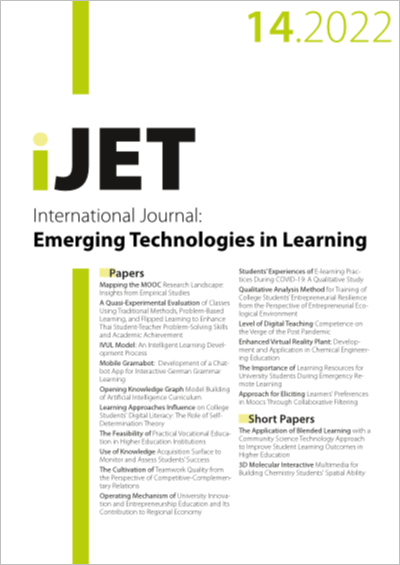Opening Knowledge Graph Model Building of Artificial Intelligence Curriculum
DOI:
https://doi.org/10.3991/ijet.v17i14.32613Keywords:
artificial intelligence, KG of curriculums, university education, educational informationizationAbstract
The knowledge points setting of artificial intelligence curriculum has shortcomings in connection between theory and practices. To overcome the problem, this study designs an open knowledge point design model based on knowledge graph. Fist, to promote the construction of the knowledge graph (KG) of curriculums, associated teaching research was analyzed visually. Then the order and hierarchical structure of the knowledge points were defined, and the ontology structure of curriculum knowledge and the relationship between knowledge points and posts were designed as well. Moreover, an overall logic structure for the construction of the open KG of curriculums was proposed. Results demonstrated that high attention should be paid to the construction and concern of teaching teams for artificial intelligence algorithms and the KG of curriculum construction. Additionally, the opening model can strengthen the openness of the KG of curriculums to reinforce the close connections between classroom knowledge and practices. Research conclusions are conducive to understand the existing problems in the KG of curriculums and provide beneficial references to the integration of information technology and education.
Downloads
Published
How to Cite
Issue
Section
License
Copyright (c) 2022 Hongwei Yue, Hanhui Lin, Yingying Jin, Hui Zhang, Ken Cai

This work is licensed under a Creative Commons Attribution 4.0 International License.



